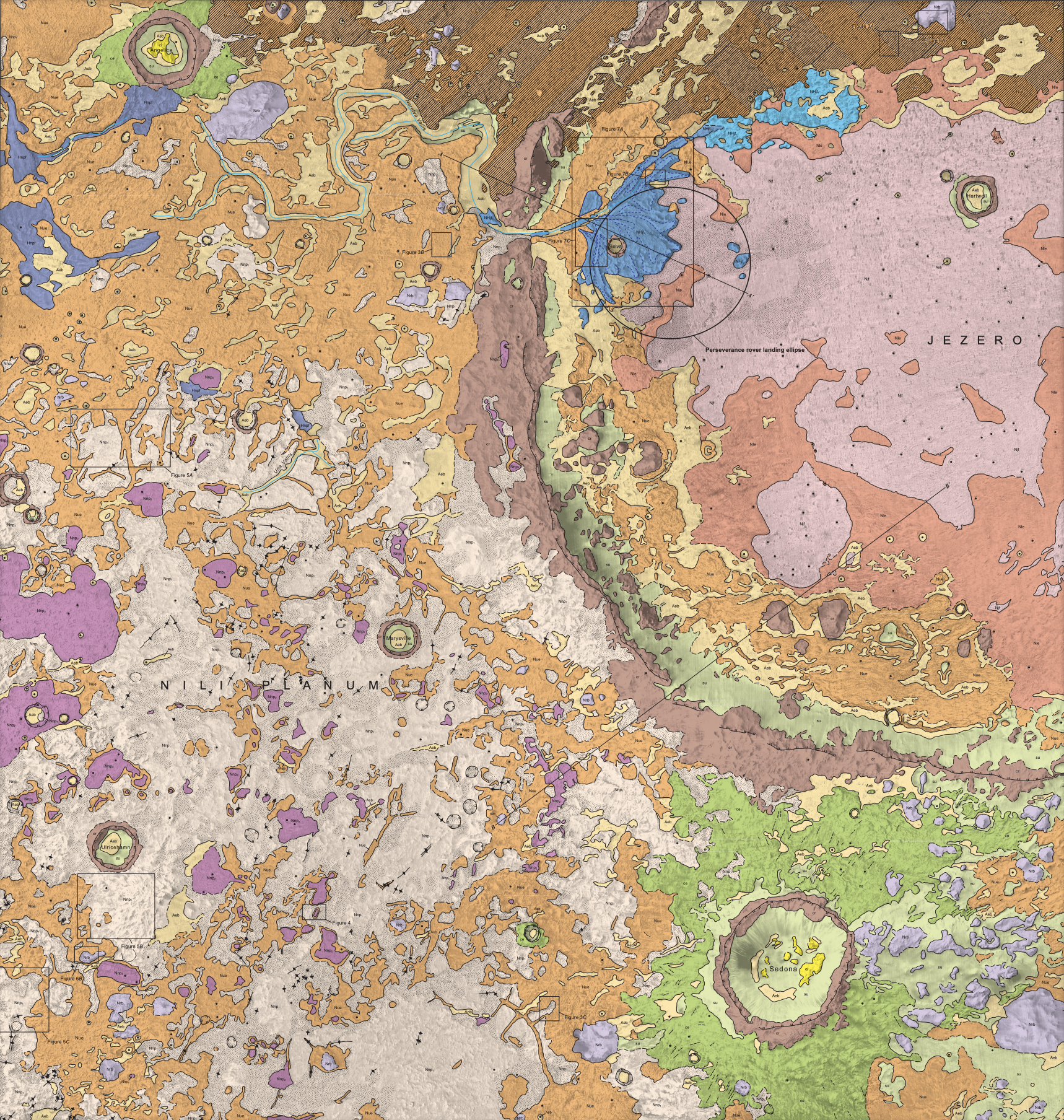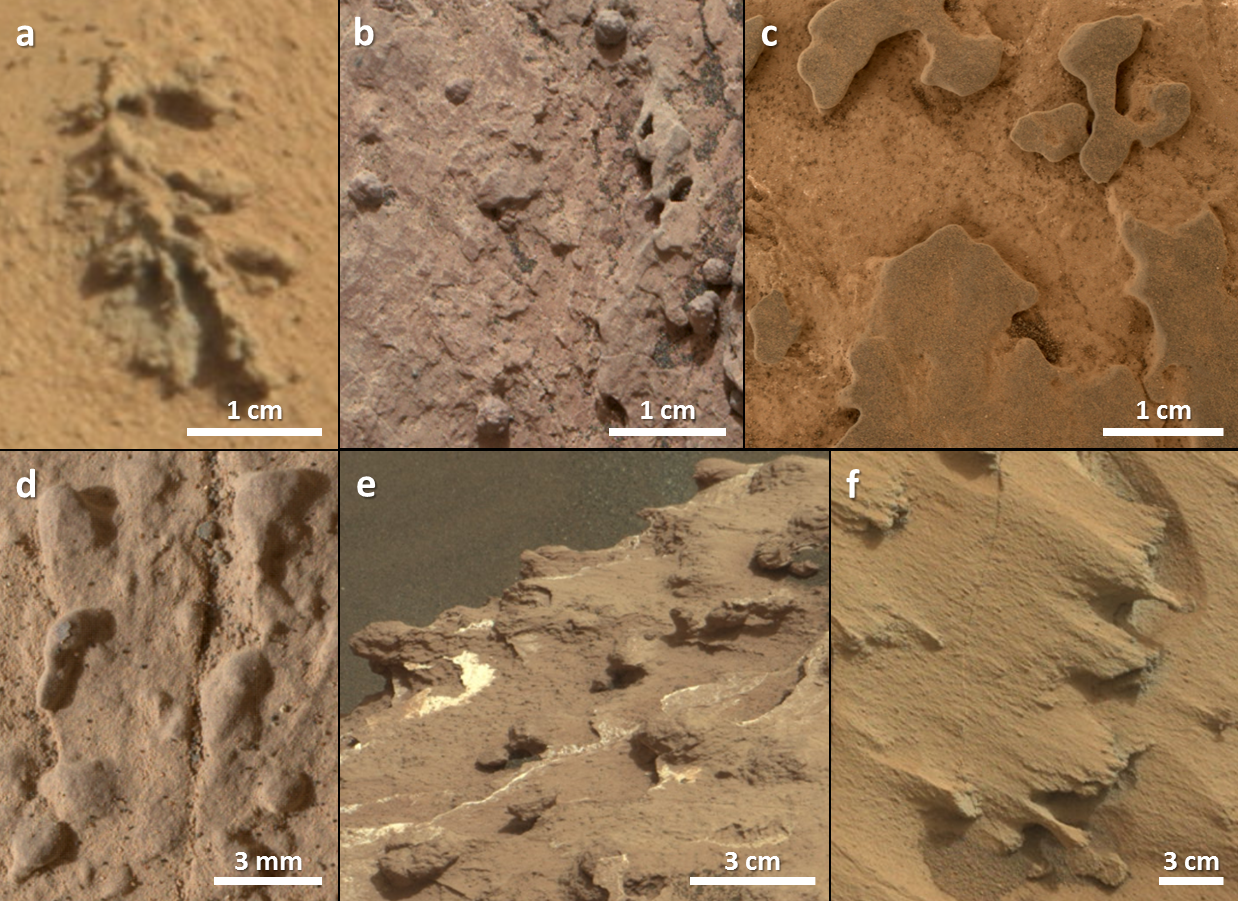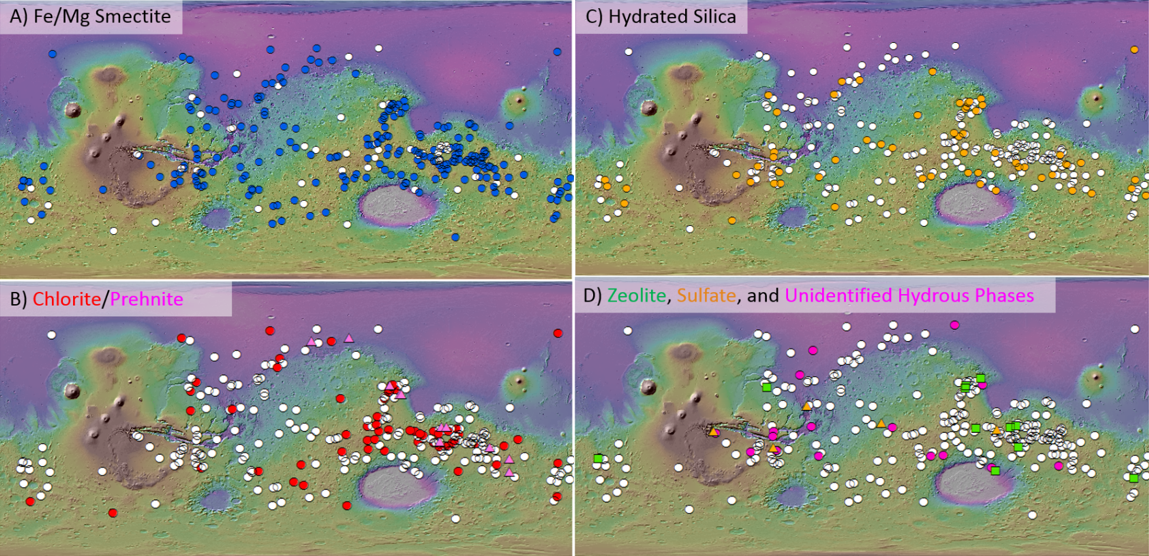Research Projects
My research focuses on investigating Mars' surface geology and composition to understand its aqueous history, evolution, and habitability. I accomplish this by analyzing rover datasets, orbital remote sensing and near-infrared (NIR) spectral datasets, and performing laboratory spectral measurements and experiments on materials under Mars-relevant atmospheric conditions.
For more details, please refer to a specific research project:
Planetary Geologic Mapping
Concretions
Hydrated Silica
Impact Crater Mineralogy
Hydrated Minerals and Atmospheric Water Cycling
Planetary Geologic Mapping
Geologic maps provide a basis for synthesizing and interpreting the surface geology of a planet and are useful for understanding the spatial distribution of geologic units and their stratigraphic relationships with each other. My most recent mapping project is now published as a USGS SIM geologic map of the Jezero crater and Nili Planum region, which the Mars 2020 Perseverance rover will explore upon landing in February 2021. This map will provide regional geologic context for Perseverance's investigations inside Jezero crater, and help to link the geologic units within Jezero crater to the units in the surrounding Nili Planum.
Previously, as a graduate student, I also published a geologic map of Ritchey crater, Mars to correlate geologic units with CRISM-derived hydrated mineralogy. Through mapping, I found that the Fe/Mg clays at Ritchey's central peak formed authigenically during the Hesperian period, well after the typical Noachian clay-forming period on Mars. As a postdoctoral scholar, I also worked on a geologic map of the Northeast Syrtis landing ellipse in preparation for landing site selection for the Mars 2020 mission.
Relevant Work:
Sun and Stack, USGS SIM 3464
Sun and Milliken, JGR-Planets 2014
Sun and Stack, LPSC 2018
Sun and Stack, LPSC 2019

Concretions
The Mars Science Laboratory (MSL) Curiosity rover has been investigating the lake deposits at Gale crater and has discovered many diagenetic features that indicate the presence of post-depositional fluids. In particular, concretions are diagenetic features that precipitate from fluids and their size, shape, chemistry, and peripheral laminations can reflect environmental conditions such as porosity, permeability, and fluid chemistry.
The concretions at Gale crater are particularly interesting because they come in different shapes and sizes that have not been observed at other rover sites on Mars. My current research focuses on surveying these concretions and their properties throughout 300 meters of lake deposits in the Murray fm. at Gale crater to determine when these concretions formed, the fluid chemistries that were involved, and the number of fluid episodes these concretions record.
Relevant Work:
Sun et al., Icarus 2018

Hydrated Silica
Hydrated or opaline silica is a hydrated phase that has been identified across Mars from orbital NIR and thermal spectroscopic datasets as well as rover observations at Gusev and Gale craters. Hydrated silica occurs in many aqueous environments on Earth and is recognized for its ability to preserve biosignatures. Opaline silica is particularly interesting because it initially precipitates as amorphous opal-A and transforms to more crystalline phases (opal-CT, opal-C, microcrystalline quartz) with prolonged exposure to water. However, the preservation quality of biosignatures tends to be best in amorphous, “immature” opal-A. Characterizing the different hydrated silica phases on Mars can therefore help us identify locations with the best biosignature preservation potential.
My doctoral research focused on identifying these opal-bearing deposits on Mars using orbital NIR spectral data and determining the opal types that are present on the martian surface. To do this, I compared the orbital CRISM spectra with laboratory spectra of opals measured at Mars-like atmospheric conditions. I found that both opal-A and more crystalline hydrated silica are present on Mars; opal-A tends to be associated with bedrock whereas more crystalline hydrated silica occurs in aeolian or unconsolidated deposits. This work demonstrates that martian opals have experienced different diagenetic histories in these two geologic settings, and that NIR spectroscopy can be a useful tool for identifying the biosignature potential of silica-rich deposits on Mars.
Relevant Work:
Sun and Milliken, 2019
Sun, Brown University Ph.D. Dissertation 2017
Sun and Milliken, GRL 2018

Impact Crater Mineralogy
Impact craters expose subsurface materials and act as windows into Mars' crustal composition. Clays in craters are often assumed to be excavated, although they can also form authigenically or be transported into the crater after the impact. I conducted a global survey of 633 craters across Mars to determine the origin of hydrated minerals at central peaks. I showed that ~35% of clays could have formed or been deposited post-impact instead of being excavated. My work also showed that among excavated clays, clay mineralogy in the martian crust changes from smectite to chlorite with depth, suggesting alteration in the martian subsurface. Most clay formation is thought to be constrained to the ancient Noachian era, but these results show that clay-forming, habitable conditions may have existed locally within some craters during the Hesperian and Amazonian.
Relevant Work:
Sun and Milliken, JGR-Planets 2015

Hydrated Minerals and Atmospheric Water Cycling
Hydrated minerals may contain different water content on Mars compared to Earth, due to Mars' lower atmospheric pressure/temperature and the resulting effect on relative humidity. During my doctoral work, I also investigated the effects of relative humidity cycling on opal spectra as they adsorb and desorb water diurnally. I determined that this cycle of opal hydration and dehydration is observable on martian diurnal timescales and can be tracked in the NIR spectral properties of opal. I applied these lab results to overlapping CRISM observations of opal-bearing deposits on Mars and found that temporal variations in martian opal spectra may reflect diurnal cycling of water between opal and the martian atmosphere.
Relevant Work:
Sun et al., LPSC 2017